The MiG-29M family is ready to dominate the global arms market. Ahead - "Latin American boom"
FAILED "INDIAN START"
As the long-term practice of close military-technical cooperation has shown, India, representing a strategic segment of the Asian arms market for Russia, has not been included in the list of states with which there is a positive dynamic of interaction in all areas of the defense industry without exception. Bringing the military potential of their armed forces to the indicators of a powerful regional superpower (which was achieved mainly due to the development of Russian, American, French and British technologies in the 20th century), the leadership of the Indian defense ministries and organizations "descended" to frank "overruns" and unreasonable vagaries and wiles in joint programs already underway. Without any doubt, the most legendary and rich in inadequate events can be considered an ambitious program to develop the inconspicuous multipurpose fighter of the 5 generation FGFA. At the beginning of 2017, the Ministry of Defense of India, as well as the management of Hindustan Aeronautics, a company participating in the Russian-Indian project, announced the suspension of work until the confirmation by Rosoboronexport JSC and Sukhoi Design Bureau of the transfer of all technologies for a promising heavy fighter.
Not only is Delhi openly integrating more and more into the “anti-Chinese axis” with the United States, Australia and Japan in the Indo-Asian-Pacific region (because of which India cannot be considered a priori a reliable strategic ally of Russia), it is also the latest technological developments in the region of aviation requested. Among the more than 40 technological points requested for transfer to the Indian Ministry of Defense, we met: the latest modification of the second stage “Product 30” turbofan turbofan, a full-fledged version of the Sh-121 airborne radar system as part of the main radar with AFAR N036 Belka, 2 BO N036B-1- stations 01L / B and 2 wing stations Н036L-1-01, operating in the decimeter L-band. Such requests look more than strange, given that the Indians are well aware of the value of the above elements for the Russian PAK FA project and the inability to familiarize themselves with the specifics of their serial production in the current military-political situation. A more or less good trend is observed only in the program of further modernization of the Su-30MKI to the version of “Super Suhoi”, which has a lower radar signature and an updated avionics.
The long-suffering Indian tender MMRCA, which provided for the purchase of 126 medium-size 4 ++ fighters for the Indian Air Force, ended in a rather unsuccessful way. According to its results, the expensive “Rafal”, which is inferior to our MiG-35 in maximum speed, as well as in maneuvering qualities, was selected as the favorite, especially if the engines of the latter are equipped with nozzles with an all-angle KLIVT thrust vector deflection system. Moreover, in the short term, the MiG-35 can be equipped with an on-board radar with the Zhuk-AME AFAR, the transmit-receive modules of which are placed on a substrate made using LTCC low-temperature co-fired ceramic technology. After the appearance of this station, the operational life and reliability of the MiG radar station will increase dramatically, and in the eyes of the customer the machine will be much more preferable than the Rafaley, Typhoons and Gripenov, given that the price of our fighter is about 2 times cheaper. But the Indians did not understand this. “Rafali” were acquired, the airborne REO of which does not have interchangeable elements either with the deck MiG-29K, or with their more advanced double versions of the MiG-29KUB, which the Indian fleet under the terms of the contract 45 units. Delhi’s final choice in favor of Rafal in the MMRCA tender completely contradicts the creation of a unified technological base and a simplified service scheme for Russian-made tactical fighters (recall that the total MiG-29UB / UPG / K / KUB fleet of the Indian Navy and Air Force is 107 fighters).
Nevertheless, the light of the wedge did not converge on the preferences of India alone. True export opportunities line MiG-29M embodied in the Egyptian contract signed in May 2015-year, in which Cairo gets 46 single multi-role MiG-29M ( "Product 9-61») and 6-8 double MiG-29M2 (MiG -35D, "Item 9-67"), and also missile weapons for them. The value of the contract is estimated at 2 billion. The architecture of the on-board radio-electronic equipment of these machines is based on the MIL-STD-1553B data bus, thanks to which they will be able to go through several stages of modernization during the 2-3's decades, including the replacement of the on-board radar with the perspective deviation system thrust, as well as equipment detection system attacking lower (NS-OAR) and upper (VS-OAR) hemispheres. Egyptian MiG-29М / М2 in the process of deep improvement will become the most advanced middle fighter in the Middle East and Western Asia. For example, the level of information awareness of the crew exclusively at the expense of its own on-board facilities (SOAR, Zhuk-AME, SOLO, OLS-K) of the optical-electronic and radio reconnaissance MiG-35 will significantly surpass the Israeli F-16I, as well as those purchased by Kuwait, Qatar and Saudi Arabia F / A-18E / F, F-15SA and F-15QA, and therefore it is quite possible to expect additional contracts with both Egypt and such countries as Iran or Iraq.
However, the Egyptians had an excellent opportunity to compare the combat characteristics of the MiG-29M purchased from the French Rafale-EM / DM, the third batch of which was delivered to the North African state the previous week. It is known that Cairo signed a contract with Dassault Aviation for the purchase of 24 multi-purpose transitional fighter jets Rafale F3 as early as February 2015; its value amounted to 3,8 billion dollars without taking into account a large set of rocket-bomb equipment, a deal with it is estimated at almost 6 billion dollars.
UNIQUE PROSPECTS OF THE MIG-29 FAMILY ON THE SOUTH AMERICAN MARKET OF ARMAMENTS
The Middle East and Persian Arms Markets can be considered the so-called “launch asset” for RSK MiG OJSC in its ambitious program of promoting foreign customers in the markets. The real “strategic asset” may be the South American countries, whose air forces are in crisis and need urgent re-equipment or replenishment of their fleets. As you know, this list includes 4 states: Peru, Uruguay, Argentina and Venezuela. Most of the tactical fighters that are in service with the air forces of these countries either have almost exhausted their operational resources or do not meet the network-centric conditions of modern wars.
Take Peru, for example. Despite the fact that Lima established a fairly stable relationship with all neighbors, there was a rather serious territorial conflict with neighboring Ecuador over the ownership of a large section in the Senep valley (east of the Cordillera del Condor ridge), which Ecuador claimed from 1960 on the year, immediately after the denunciation of the border treaty signed in 1941.
This conflict, which took place from January 21 to February 28 of 1995, is known to us as the “Alto Senep War”. Practically all types of armored vehicles, tactical aircraft, Grada, etc. were used in this confrontation. Mutual exchanges of artillery strikes and attempts at local offensive operations in the valley of the Senepa River continued until February 28, the day of the signing of the peaceful Montevideo Declaration, which proclaimed the end of the war. All is good, but the outcome of the conflict was not in favor of the Ecuadorian side, since the demarcation carried out by 13 in May of 1999, set a clear boundary along the ridge of Cordelier del Condor, which threw Ecuador on its western slopes. No one can rule out that after the next change of power, official Quito will decide once again to revise the borders in the disputed valley of the r. Senep.
Highly suspicious events also occur in the bilateral relations between Peru and Chile. For example, in March 2015, the Peruvian fleet soldiers were declassified, selling important tactical information in Santiago. At the same time, the defense department of Chile carefully concealed what was happening for a long time. The objectives of conducting intelligence activities in the structure of the Peruvian Navy are still unknown, but they may well be positioned as an indicator of future conflict situations.
The Peruvian Air Force is equipped with 11 light MiFI-2000P / DP MFIs, 2 combat training MiG-29UB, 6 multipurpose MiG-29CE and 7 more advanced MiG-29-SMT. Attack aircraft presented 8 Su-XNUMHUBK and 25 Su-10K. Among them, only the Mirage and MiG-25CE / SMT in the number of 29 fighters belong to the most combat-ready fleet capable of performing operations to gain air superiority and attack land targets. This is quite enough to contain 25 Ecuadorian "Kfirov", but very little for confrontation with 25 Chilean F-42A / B / C / D. Today, the Chilean Air Force has not only a significant numerical advantage over the Air Force of Peru, but also a technological one. In particular, the Chilean F-16C Block 16 can be “charged” with the penultimate long-range modification of the AIM-50C-120 rocket, capable of striking Peruvian fighters at a distance of 7 km. An equally important argument in favor of Santiago can be considered the IAA Phalcon long-range radar detection and control aircraft acquired from Israel, capable of detecting MiGs and Mirage air forces of Peru at a distance of 120-350 km.
Consequently, Peru needs to update the fighter component of the Air Force, and RAC MiG is ready to offer Lima the most profitable and effective options for such an update. To achieve the technical condition of the Air Force of Peru, Chile, Peru requires the purchase of approximately 2 squadrons (24 machines) of multipurpose MiG-29М2 "Egyptian version" fighters equipped with P-27EP and RVV-AE missiles, as well as high-precision weapons for ground targets (X-29T, X-59М). Such a deal will be approximately 50% of Peru’s annual budget for 2017-th year (about 1 billion dollars). To increase the combat potential of the Peruvian air force with a “reserve” of at least one decade, it is also possible to provide an export credit for acquiring an even larger number of MiG-29М2. For better informational coverage of fighter crews and proper coordination in performing air operations, Peru will need at least one DRLO aircraft, the best contender for which can be considered the Chinese ZDK-03, previously supplied by the Pakistan Air Force.
The next potential buyer of the MiG-29M family of fighters is Argentina, and here the situation is even more complicated than from Peru. Official Buenos Aires is still optimistic about the idea of regaining control of the Falkland Islands, but for this, Argentina has practically no military tactical tools. The Mirage multi-role fighter aircraft were completely withdrawn from the Air Force, while the 19 fleet is represented only by the IA-63 Pampa (AT-63) combat training aircraft unsuitable for modern air operations. Only light tactical “Martin Pescador” tactical missiles with 9 km range were adapted to the onboard radio-electronic equipment of these aircraft. Not only will such a distance fail to come close to a single modern “Daring” class of the British Navy, the rocket also has a radio command guidance system that can be easily suppressed by ship EW. There is no information about the deployment on the Pamps of the first versions of the missiles of the close air combat and the self-defense of the AIM-9 “Sidewinder” family.
The only combat-ready modification could be the IA-63 "Pampa-III." This vehicle can receive airborne radar AN / APG-67 with a target detection range of the “fighter” type 80 km and hardware capability to use AIM-120C AMRAAM missiles. Modernization of Pampa is being carried out by the Argentine company FAdeA with the support of Lockheed Martin. The AN / APG-67 radar can allow Pampa-III not only to conduct air combat beyond visual visibility, but also to work on surface / ground targets, including the synthetic aperture scanning (SAR) mode and the GMTI tracking ground mobile target tracking mode. Nevertheless, even a few dozen subsonic Pamps with a maximum combat load of 1200 kg and a speed of 0,7-0,75М cannot be opposed to a pair of links of the modern British Typhoon transferred to the Malvinas Islands.
The Russian MiGs are fully capable of restoring the high potential of the operational-tactical link of the declining Argentine Air Force. Considering the territorial claims against London, Buenos Aires will need from 80 to 100 multi-role fighters MiG-29М2 with further modernization of the onboard radar complex due to the installation of the radar "Zhuk-AE / AME", because very soon the British "Typhoons" will receive new radar "Captor" -E ", whose characteristics are not far behind AN / APG-81; And you should not forget about the F-35B purchased by London.
Tiny Uruguay could be the next Latin American customer of multi-role tactical fighter jets. The state, located between Argentina and the Brazilian state of Rio Grande do Sul, is only one and a half times larger than Bulgaria and has a military budget of 170 million dollars. An important feature of Uruguay is a very close economic and cultural relationship with the Russian Federation and Armenia, and the latter in the Latin American state has a huge community, often influencing the policy of Montevideo. It is known that Uruguay was the first to condemn Turkey for the Armenian Genocide, and then supported Yerevan in the foreign policy arena in the matter of protecting the Nagorno-Karabakh Republic. It is quite logical that today the Uruguayan military department is studying the possibility of buying fighters of the MiG-29 family, which are known to Uruguayans for their service on the western air borders of Armenia as part of the Russian Federation Air Force at Eribuni airbase. At the moment, Montevideo does not have territorial disputes and other conflicts with neighboring states, and therefore we can expect only a small contract for the purchase of a MiG-29М2 link, or a squadron of simpler MiG-29С vehicles taken from the reserve, which is quite enough for a rare patrol of air borders and maintaining minimal training of the flight personnel. Such a deal will be about 90 - 120 million dollars, which is 7 - 30 times less than with any other South American state.
They need a partial replenishment of the combat aircraft fleet and the Venezuelan Air Force. In Colombia, a bloody half-century-old conflict between the country's leadership and the partisan Marxist movement FARC is moving towards the end - a practically full-fledged army formation armed with small arms, heavy machine guns, RPGs, anti-personnel mines, etc. The number of groups reaches almost 20 thousand people. The main goal of the FARC is the socialist revolution achieved by the rebel opposition of the Maoist type. Meanwhile, the latter has already led to 220 thousand victims.
But the confrontation within the borders of Colombia story with FARC is not limited. In July 2010, the Colombian government managed to accuse Caracas of harboring a large party of the Colombian rebel organization FARC in Venezuela. The accusation was made at an extraordinary meeting of the Organization of American States (OAS) in Washington, which led to the rupture of diplomatic relations between states. Two years earlier, another incident occurred that nearly led to a military confrontation between Colombia and the Venezuelan coalition with Ecuador. Without agreement, units of the Colombian government forces invaded the territory of Ecuador during the operation to suppress one of the FARC cells. Ecuador’s President Rafael Carrera and Venezuelan leader Hugo Chavez regarded this action as an encroachment on territorial integrity. Armored units of the NE of Ecuador and Venezuela urgently moved to the border areas with Colombia, and preparations for combat duty of tactical aircraft began at air bases. Later, the degree of tension decreased, but the historical fact of the aggressive actions of the Colombians in relation to the neighboring states did not evaporate.
I also recall the fact of the groundless accusation of the crews of Russian strategic bomber-rocket carriers in the violation of Colombia’s airspace by Juan Manuel Santos. This happened in November 2013 year, during a visit to the "strategists" of friendly Venezuela and Nicaragua. While the White Swans' flight took place strictly above the neutral waters of the Caribbean Sea, the command of the Colombian Air Force from the country's leadership received an order to send an Israeli-made Kfir C.10 / 12 fighter jets to escort and possibly intercept. Hence Venezuela, Ecuador and Russia are regarded by Bogotá as opponents. Moreover, Colombia in the event of a military-political crisis will support the current regime of the White House. This is confirmed by the participation of the Colombian "Kfir C.10" in the exercises "Red Flag 12-4" (in 2012-th year), as well as in the same exercises for 2015-th year, held at Nellis airbase.
Modern Air Force and Air Defense of Venezuela are the strongest in the region: the 2 squadron of the 23 heavy multipurpose Su-30МКВ fighter jets is in service. Technologically, they are superior to the current fleet of Colombian "Kfirov". There is also a 1 squadron from 12 multi-purpose fighters of the earlier version of the F-16A Block 15, which reinforces the power of Caracas against the backdrop of Bogota. But such an alignment will be observed only before intervention in possible conflicts on the side of Colombia by tactical aircraft of the US Air Force, or deck aircraft of the US Navy. It is at this point that Venezuela’s need for a large number of new modifications of the MiG-29 and Su-30 families of fighters is hidden. The desire of Caracas to acquire an additional amount of Su-30 has become known from the statement of the Deputy Director General of the Federal Service for Military-Technical Cooperation of Russia Anatoly Punchuk, who oversees the Russian delegation at the 11 Latin American Exhibition and Conference on Aerospace and Defense Technologies “LAAD-2017”. At the same time, Pinchuk focused on the huge socio-economic problems that could be a serious obstacle in concluding a contract for the supply of additional Su-30. The situation in the country is really very explosive, and the problems here are not only economic.
The fact is that according to the results of the parliamentary elections of 2015, the extremely oppositional “Block of democratic unity” (BDE) of Venezuela won, which at the beginning of the 4 quarter of the year completely ceased interaction and consultation with the executive power of the South American state. At the beginning of 2017, the National Assembly (Parliament) of Venezuela, headed by the BDE, tried to dismiss Nicholas Maduro from the post of president, starting the impeachment process, but the Supreme Court declared the process invalid. The crisis is triggered by rather bad trends in the socioeconomic sector, as well as by the solid "feeding" of opposition forces from Washington, which intends to achieve the earliest possible removal of Maduro from the presidency, including both legal instruments and the state-wide instrument - the coup d'état. In October of the previous year, while attempting to disperse a demonstration in the state of Miranda, the use of firearms against the police by adherents of the opposition “Block of Democratic Unity” was noted. All these events are almost identical to that “maydanuta orange plague”, which led to the decline and well-established manifestations of fascism, the Ukrainian elite. In the current situation of destabilization, military intervention in the Venezuelan internal conflict of the US Armed Forces looks very likely, especially since Caracas can be an excellent springboard for deploying SARS and the Russian naval base to control the Atlantic and aerospace above the US eastern coast.
In such an environment, Venezuela will no longer need Su-30MKVs, which have the outdated H001BE radar, but new export Su-30ММЭ, equipped with Bars. But the defense budget of the Bolivarian Republic of Venezuela is not dimensionless and amounts to about 12-13,5 billion dollars. For this reason, it is much more expedient for Caracas to purchase two more Su-30SME squadrons in the number of 24 vehicles with a set of weapons (such a contract can be valued at 2,5 billion dollars) and about 70 MiG-29М2 for another 4 billion dollars with weapons. In such numbers, these vehicles are quite capable of creating quite good defensive lines over the southern part of the Caribbean Sea, especially since Venezuela’s ground defense component is also the strongest in the region: objects of strategic importance are covered with 12 by Buk-M2 division and 2 by C-300B division “Antey -2500. At the same time, the Venezuelan Air Force never got rid of the “disease” inherent in most of the air forces of South American states - the lack of radar patrol and guidance aircraft.
As you can see, at least 4 states in South America, whose defense officials were present at LAAD-2017 in Rio de Janeiro, showed serious interest in the products of the MiG Design Bureau, and such interest will certainly lead to contracts worth 4 and more billion dollars. Argentina and Venezuela on the South American “weapons trading platform” are the most promising customers of Russian tactical fighter jets. In the future, contracts relating to the purchase of modern surface ships of the frigate class, diesel-electric submarines and air defense systems may be considered. Here you can isolate the Armed Forces of Argentina, which have no more or less modern fleet and ground-based air defense systems at all.
BANGLADESH AND IRAN - SPARE VARIANTS OF THE ASIAN ARMAMENT MARKET
Despite the fact that Egypt acquired more than 50 MiG-29М / М2 fighters, this state cannot be considered the main prospect area for the MiG RAC, because Cairo wants to grab everywhere: Rafali is purchased, Abrams are produced M1A1 Abrams, and in general, the ruling environment Abdel Fattah al-Sisi continues to look strictly in the western direction, adhering to the military-political vector of the "Arabian coalition" and other US front-Asian satellites. An example of this is the absolutely neutral position of the official Cairo regarding the massive missile strike by the American BGM-109 "Tomahawk" missile defense on the Syrai Air Base Shairat. The Egyptian Ministry of Foreign Affairs merely “expressed alarm at the dangerous development of events.” It’s quite difficult to talk about any far-reaching plans for a strategic partnership between Moscow and Cairo in this situation. Iran is another matter.
Tehran and Moscow act in the Syrian theater of operations almost together, absolutely without regard to the opinion of Washington and its henchmen. The Iranian air defense and radio engineering units are more than 50% equipped with Russian equipment or electronic components of Russian or Chinese origin. The only component of the Air Force that needs to be updated today is the fighter fleet. We have already reviewed it more than once: the X-NUMX of the F-43A “Tomcat” interceptor fighter (whose onboard radar AN / AWG-14 is unified by the MIM-9B “Hawk” anti-aircraft missiles, which have a range of 23 - 90 km due to high altitude launch), 110 MiG-36 / U / UB, 29 F-64E / D "Phantom-II", 4 Su-30MK, 24 attack aircraft Su-10, 25 light multi-purpose fighters "Mirage F10 inNNZnnnnn iznnnn innnn innnn iznn inn izn xxnxxxxxxxi 1M (Chinese copy of the MiG-24). In such circumstances, Iran will not be able to withstand even the current Qatar Air Force, which only F-7QA units 21 units have. And “at the gates” of the Arabian Coalition OVVS and Hel Haavir with their 15 multifunctional fighters! The only way out for Iran is the acquisition of several hundreds of MiG-72C, capable in the full sense of this to fight for domination in the Asian skies. The future deal with the Ministry of Defense of Iran on these machines is able to exceed 1000 billion dollars.
Bangladesh is another Asian nation interested in the great Fulcrum-F. The fighter fleet of the Air Force of this state is represented by 32 Chinese F-7MG / MP, as well as 8 MiG-29А / UB, which are not able to withstand any modern fighter squadron in the Indo-Asia-Pacific region. India, with whom Dhaka will sign a strategic agreement on military-technical cooperation for 25 years in the near future, has taken up the issue of financing the updated Air Force of Bangladesh. Financial support for Bangladesh from Delhi is provided by an open credit line for the purchase of Russian weapons and spare parts worth $ 600 million. It is reported that Bangladesh may acquire 8 multipurpose MiG-35 fighters under a tender made public by Bangladesh's general director for defense procurement. Among other applicants are considered Su-30SME and Su-35С, but given the geographical position and the length of the borders of Bangladesh, success is precisely on the side of the offspring of RAC "MiG".
While this material was being prepared, the outstanding aircraft-technical and combat qualities of the MiG-29 line of fighters were once again confirmed by the example of the tricks of the Indian side. Having ignored our cars in the MMRCA tender, the real interest of the Hindus in “Falkrum” has not disappeared at all. As it became known from the Malaysian media with reference to Datuk Seri Najib Razak, Prime Minister of the monarchy, the Indian Ministry of Defense expressed interest in 10 single MiG-29Н and 2 double MiG-29NUB. As is known, the French Rafale is leading in the passing Malaysian tender for the modernization of the country's air force, after which the 29 will be written off. But their service will not end there. It is obvious that these multipurpose fighters will get into the HAL workshops, where they will be upgraded to the level of the MiG-29UPG: full-fledged air-to-surface modes of operation will appear, as well as anti-ship and anti-radar capabilities. The update can be carried out before sending to India by the forces of the technical center “Airod Aerospace Technology Systems Corporation” in Kuantan. After the work on updating the airframe, the life of the machine should reach 6000 hours, which will allow the machines to last until about 2030. To date, the export potential and modernization reserve of Falkrumov has practically no visible limits.
Information sources:
http://forum.militaryparitet.com/viewtopic.php?id=16561
http://www.ntv.ru/novosti/1490196/
https://regnum.ru/news/965883.html
http://forum.militaryparitet.com/viewtopic.php?id=16683
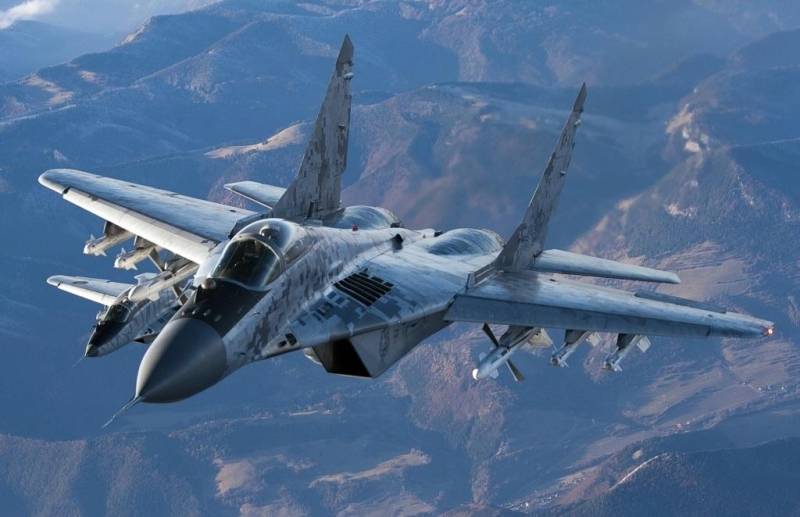
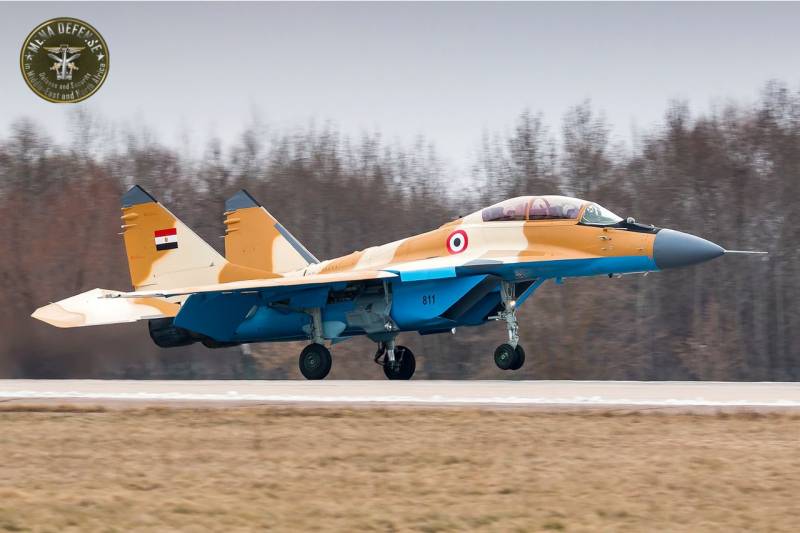
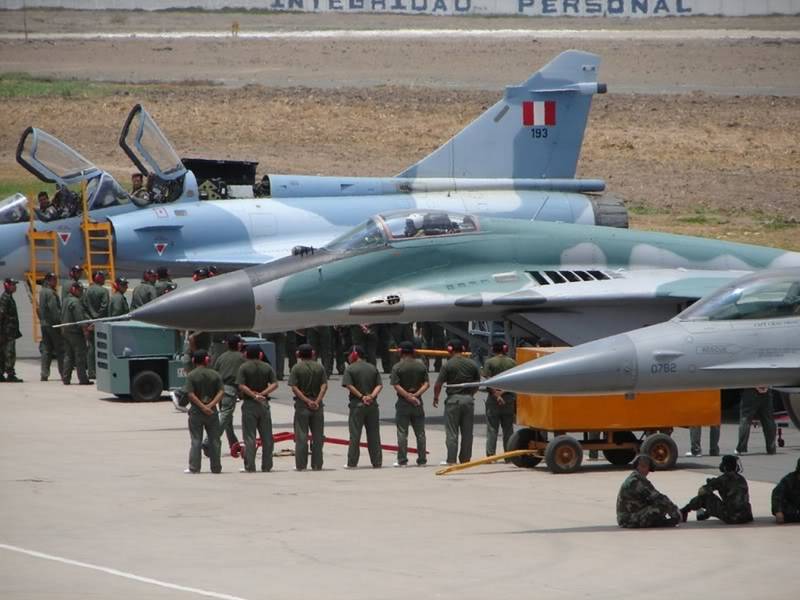
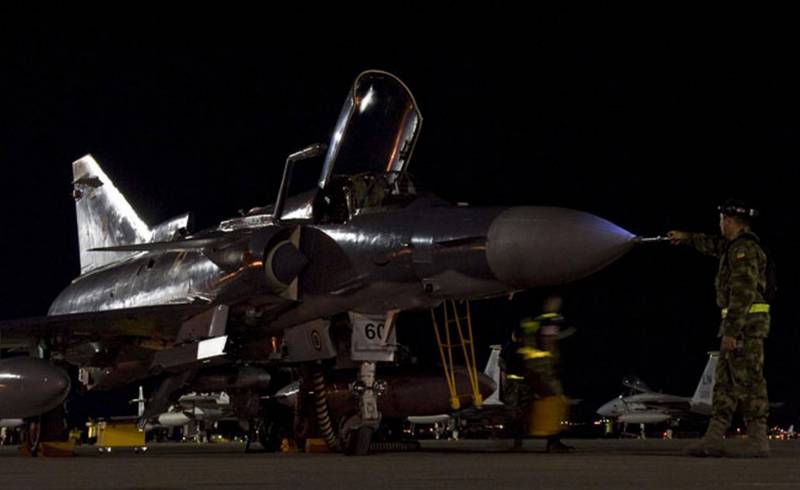
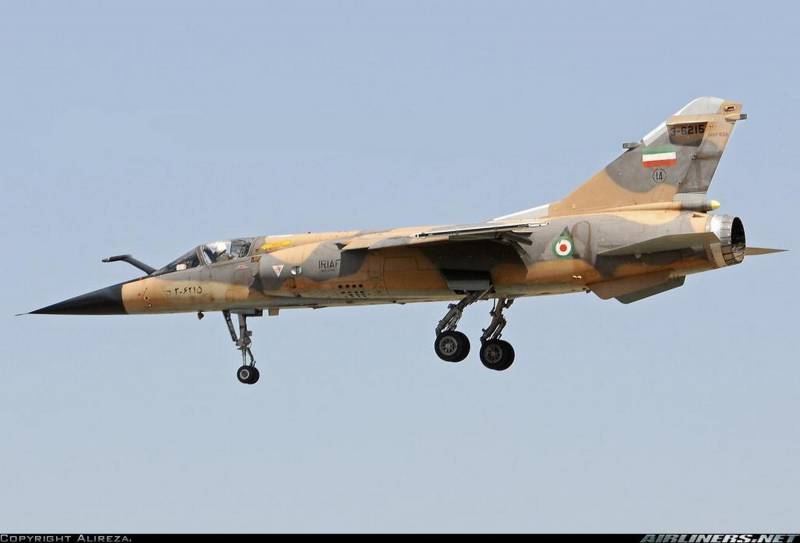
Information